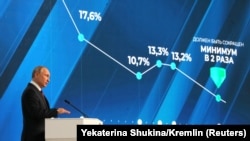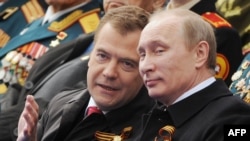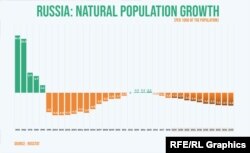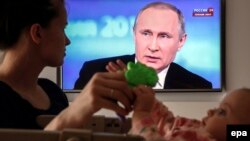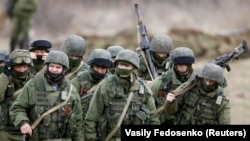During his annual address to the Federal Assembly, Russia’s parliament, President Vladimir Putin cited the need to reverse Russia’s negative demographic trend, which has been worsening in recent years. This negative trend, he said, was reversed “at the beginning of the 2000s.”
Putin became an acting president of Russia on December 31, 1999, then elected in May 2000 and served in that capacity until 2008, when he traded places with then Prime Minister Dmitry Medvedev before returning to his former position in 2012.
Putin claims that during his first presidential term his administration was able to reverse Russia’s demographic decline. Reality provides a slightly less rosy picture, however. There is no debate that Russia’s demographic indicators, which were already in decline during the late Soviet era, took a dangerous plunge in the 1990s following the break-up of the Soviet Union. According to the Russian state statistics agency, Rosstat, by 1995, the country’s population growth was negative, with a natural population loss of 5.7 per 1,000 people. This dropped further to -6.6 in 2000, Putin’s first year in office, and the same figure was recorded in 2001. The first real significant progress towards reversing the negative birth rates occurred in 2006, in the middle of Putin’s second term in office, and the population growth rate balanced out at zero only in 2012.
It was during the next three years that Russia enjoyed positive population growth. The population registered 0.2 more births than deaths per 1,000 people in both 2013 and 2014, and the growth rate increased to 0.3 more births than deaths per 1,000 people in 2015. However, Russia again sank into negative population growth by 2016, hitting 0.01 fewer births than deaths per 1,000 people, and is projected to drop to -1.5 this year.
These years of growth also deserve scrutiny because in 2014, Russia annexed the Crimean peninsula from Ukraine, which at the time had a population of approximately 2.2 million people. From 2014 onward, Rosstat began to take the Crimean population into account. This means that despite taking over a territory and adding an additional 2.2 million people to its de facto population, Russia’s population growth rate remained the same as in 2013, prior to the annexation. And in 2015, there was a minor gain before the situation reverted back to the negative.
All in all, this doesn’t bolster Putin’s sweeping claims of turning Russia’s demographic fortunes around. Putin’s Crimea policies and the international sanctions preceded Russia’s latest regression. In March 2015, financial journalist Mark Adomanis wrote a column for The Moscow Times in which he highlighted worrying demographic trends in the first two months of that year.
“Putin and his increasingly hawkish inner circle dismissed out of hand the idea that Western sanctions would cause any real damage and suggested that any shortages would be quickly and successfully filled in by Russian firms,” Adomanis wrote.
“However, as sanctions bit into the financial sector, as Russia's ‘self-sanctions’ significantly limited the availability of foreign foodstuffs, and as Western analysts said that the economy would first slow and then start to contract, Rosstat's data has shown pretty much exactly what you would expect,” Adomanis added.
No reasonable person would expect Putin to have turned Russia’s freefalling demographic trend around at the beginning of his first term, but his own words suggest that he did. And while Russia managed to achieve a very modest population growth by the beginning of Putin’s third term, these gains were quickly wiped out within a few years, amid what some would see as a new economic crisis brought on by Russia’s aggressive stance the world reaction to it.
For this fact check, Polygraph.info collaborated with Factograph.info at Radio Free Europe.




